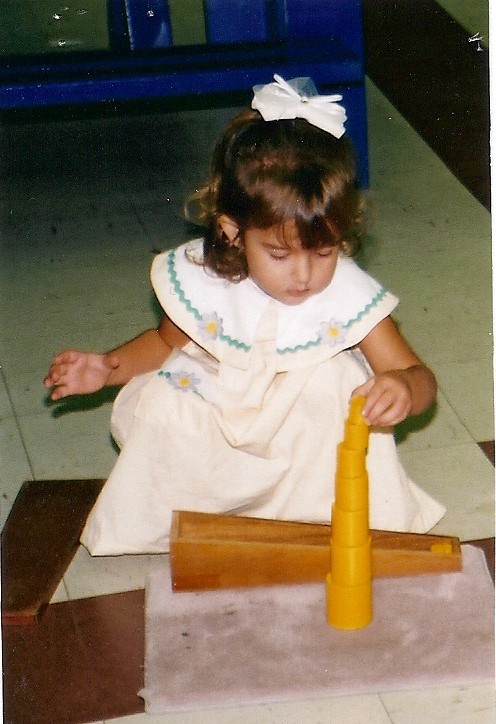9AM – NOON Preschool 2 1/2 to 4 years old — including VPK
9AM – 2PM Kindergarten
9AM – 3PM Upper and Lower Primary and Middle School
Before and After School Child Care Available
Tutoring Available
Summer Sessions
Extra Curricular Activities Available
For VPK enrollment information, click here.
The Montessori approach to learning encourages learning through all five senses, allows children to explore through hands on discovery, and teaches to each child’s interests.
The most important years of growth are the first six years of life. A child’s learning process does not wait until he enters school at age five or six. It begins with birth, and he learns at a faster rate during his first three or four years than at any other time in his life. What he learns and how he learns has a tremendous effect on his entire life. It is during this period when the child is most sensitive to stimuli from all sources absorbing and learning from his environment. We work with these sensitive periods.
The areas of learning are divided as follows:
The exercises of PRACTICE LIFE are designed to help the child utilize his sense of order in his environment, and within himself. They help the child develop concentration and organization, and teach him to take care of himself and his surroundings. These exercises also provide indirect preparation for writing and reading through development of eye-hand coordination and muscular coordination and control.
SENSORIAL AREA – Dr. Montessori regarded the training of the senses as the forming of a foundation upon which the child will later build clear and more abstract ideas. The sensorial materials reach the head through the hand. Through these materials the child learns to perceive his world.

The materials in the MATH AREA are designed so the child working with concrete materials gains knowledge of abstract concepts. The materials follow an orderly progression and enable the child to grasp concepts with greater ease, at his own rate.
The building blocks of LANGUAGE, the individual letters, are presented as phonetic sounds. The child is exposed to these sounds, and learns to blend sounds together to make words as he or she is ready.
As children receive impressions through their senses from the moment of birth, Sensorial materials are designed to isolate and categorize qualities of the environment perceived through the senses. The Sensorial activities focus on the development of sensory perception. The Montessori program offers a multi-sensory approach to learning, encouraging the children to use the optimum combination of senses for learning. For example, the tower activity pictured at the right compares the visual qualities of “large, larger, largest” and “small, smaller, smallest.”
Excerpt taken from The Pink What? A Quick Reference Guide to Montessori Materials by Deede Stephenson (copyright 1995)
